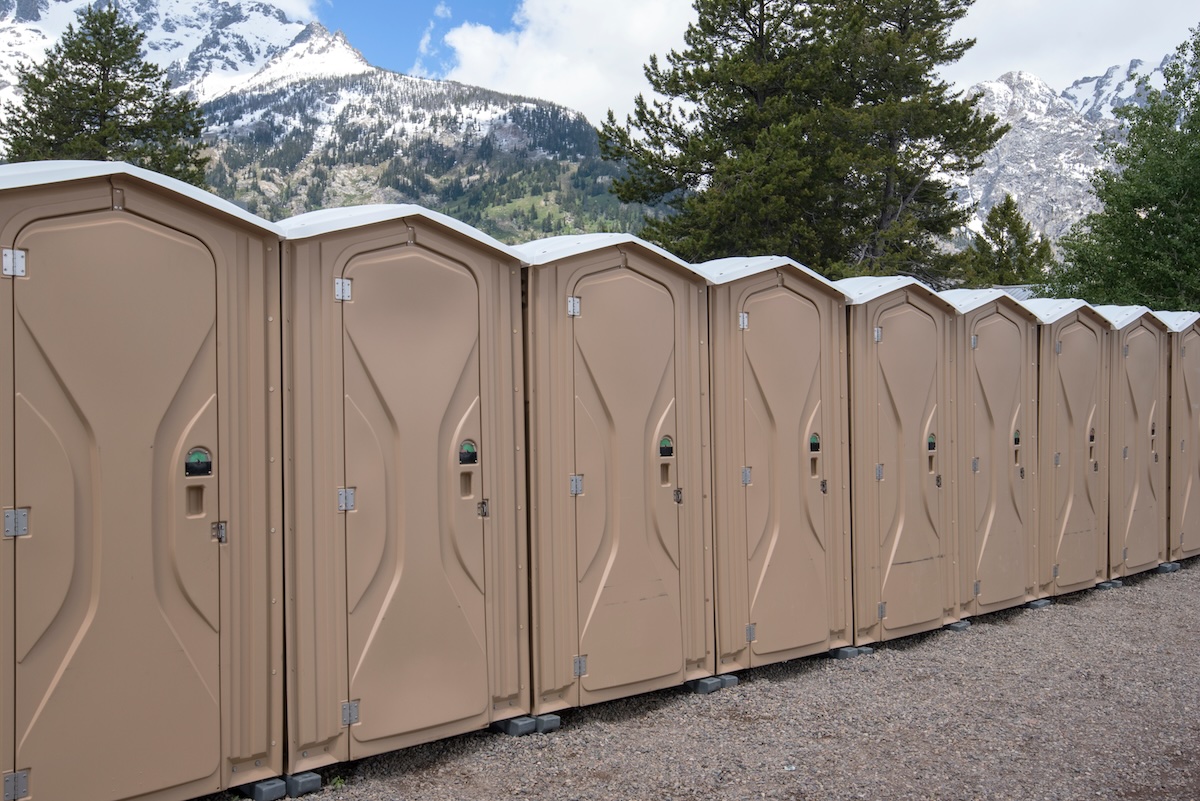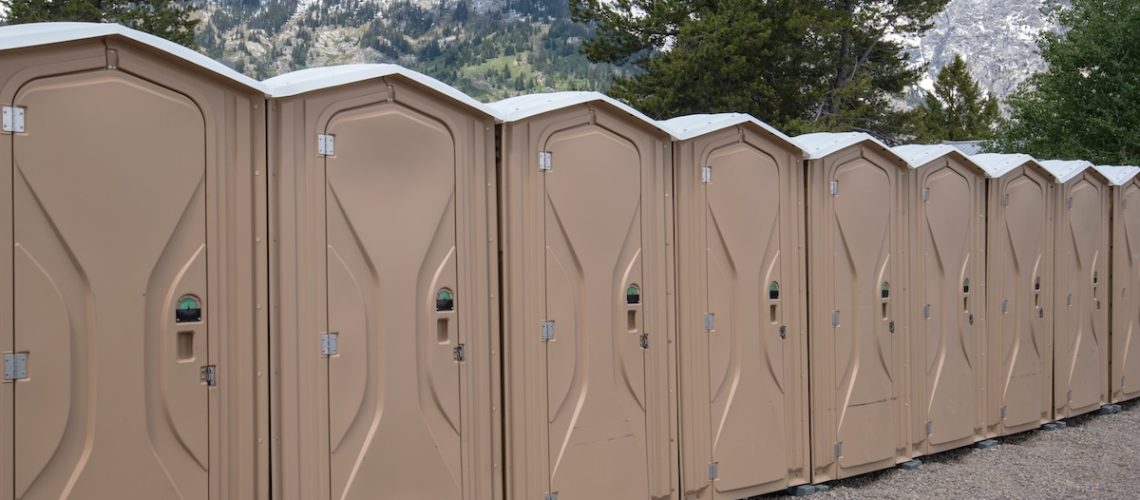Outdoor toilets serve an important role where permanent plumbing isn’t available. For many, the first instinct is to search how to do it themselves. But just because it’s possible doesn’t mean it’s practical, legal, or safe.
Instead of giving a step-by-step how-to, this guide explains what’s actually involved in the process and why hiring a professional service is the smarter option. From waste handling to disposal compliance, the work behind a proper cleanout isn’t as simple as it looks.
What Counts as an Outdoor Toilet?
Outdoor toilets fall into a few main categories, each with its own disposal needs:
- Portable chemical toilets: These are the most common, used on job sites and at events. They include a waste tank filled with chemicals that reduce odor and break down solids.
- Composting toilets: Popular in off-grid homes and eco-conscious setups. These systems use aerobic processes and often require separation of liquid and solid waste.
- Holding tanks or vault systems: Found in RVs, tiny homes, and seasonal camps. These store waste in sealed containers and must be pumped out periodically.
Each system is designed to manage waste efficiently under specific conditions. But none are made for indefinite use without intervention.

The Process Professionals Use
Professional sanitation teams don’t simply scoop and go. They follow a detailed process with specialized equipment designed for speed, hygiene, and compliance.
Arrival and Setup
A vacuum truck arrives with a sealed tank and industrial pump. These trucks are equipped to handle thousands of gallons of raw sewage without spill or exposure.
Hoses are uncoiled and inspected. Operators wear gloves, protective suits, and sometimes full-face respirators depending on the site.
Waste Removal
Using high-powered suction, the technician removes all liquid and solid waste from the tank. If the contents have solidified or separated, the operator may agitate the waste to ensure full removal.
This step alone requires technical knowledge. A tank that isn’t fully cleared can cause clogs, odor issues, or accelerate future backups.
Rinsing and Deodorizing
Once the waste is removed, the interior is sprayed with water to loosen residue and flush remaining solids. This rinse water is also vacuumed out to avoid dilution of the next treatment stage.
Technicians may also apply an odor neutralizer or biodegradable chemical to control lingering smells and reduce buildup before the next use.
Recharging (When Applicable)
In chemical toilet setups, the tank is then recharged with a blue deodorizing solution that breaks down waste and masks odor. This solution includes biocides, dye, and surfactants calibrated to last through the next service interval.
For composting units, the refill might include a bulking agent like sawdust or coconut coir rather than a chemical treatment. The goal is to maintain the system’s biological function, not disinfect it.

Cleaning and Restocking
The technician wipes down the seat, walls, and floor inside the unit using disinfectants. Any buildup, graffiti, or surface stains are removed. Toilet paper or urinal blocks are restocked.
In multi-unit situations or on high-traffic job sites, this step is handled quickly but thoroughly. Some companies rotate units entirely instead of deep-cleaning on site.
Final Inspection
Before leaving, the technician checks for leaks, cracks, or structural issues. Vent pipes, door latches, and roof caps are examined. If the unit is damaged or overused, it may be flagged for repair or replacement.
Digital records may be updated with a timestamp and service notes, especially in contracts that require proof of maintenance.
Why It’s Not a DIY Job
From a distance, pumping out a toilet may seem like something a determined person could figure out. But the reality is different.
Waste Transport Is Regulated
Once sewage is extracted, it must be disposed of at an authorized treatment facility. It’s illegal to dump human waste into regular trash bins, storm drains, septic tanks you don’t own, or open ground.
Licensed sanitation providers maintain access to disposal sites and carry permits that allow them to legally and safely haul the material.
Equipment Requirements Are Serious
A shop vac and a tarp won’t get it done. Even small cleanouts require a sealed vacuum system rated for biohazardous material. Hoses must resist backpressure and contamination, and trucks must prevent spillage under motion.
You’d also need access to PPE, chemicals, and a safe storage method if transporting waste in your own vehicle.
Health Risks Are High
Raw sewage contains bacteria, viruses, and parasites. Without training and PPE, exposure can lead to serious illness. Waste splash, aerosolization during pumping, and chemical reactions all pose real dangers.
Professionals are trained in sanitation safety, chemical handling, and decontamination protocols. DIY approaches rarely offer that kind of protection.

You Could Ruin the Unit
Improper pumping, over-rinsing, or chemical imbalance can damage holding tanks or corrode components. Many units are made from lightweight plastic that becomes brittle over time. Applying too much pressure or the wrong tool in the wrong place can lead to costly replacements.
When Service Is Most Needed
There are clear signs it’s time to call in a professional. Here’s when you shouldn’t delay:
- Odors are strong even when the lid is closed
- Waste level is near the top of the tank or bowl
- Flies or insects are present in or around the unit
- You’re preparing for heavy use at an upcoming event
- The season is ending and your remote unit needs winterizing
Regular maintenance prevents emergency calls, overflow incidents, or user complaints. If your unit serves multiple users or is left in the heat for long periods, more frequent servicing is usually needed.
Cost of Professional Servicing
Most portable toilet servicing is billed per visit, with price points depending on:
- Unit location (urban vs remote)
- Access difficulty (on a trailer vs ground level)
- Number of units
- Frequency of visits (single, weekly, monthly)
The base cost covers pumping, rinsing, recharging, and light cleaning. Additional charges may apply for deep cleaning, graffiti removal, deodorant blocks, or paper restocking.
Compared to the cost of buying or renting all the necessary tools, not to mention the risk of fines or illness, the price of a professional cleanout is often far more economical.
Why Recurring Service Matters
If you use an outdoor toilet long-term, one-time cleanouts won’t cut it. Regular service keeps the system functional and compliant. Most providers offer weekly, biweekly, or monthly plans that ensure your toilet never becomes a hazard.
Recurring service also allows for early detection of damage, insect infestation, tank warping, or chemical imbalance. By keeping waste levels in check, you avoid overflow events and complaints from users or guests.
Upgrading or Rotating Units
If your outdoor toilet gets heavy use, a standard plastic porta-potty might not be enough. Many sanitation companies offer upgraded options such as:
- Restroom trailers with flushing capabilities
- ADA-accessible models with more space
- Double-capacity tanks for longer use between service visits
- Urinal-specific setups to reduce solids buildup
Some also offer a rotation service, swapping out full units for freshly cleaned ones in high-traffic areas. This ensures zero downtime and avoids on-site odor during cleaning.

Cleanouts Done Right
Sanitation is not the place to cut corners. A neglected or improperly handled toilet isn’t just unpleasant, it’s a liability. If it’s a temporary unit on a construction site or a composting toilet on a backwoods property, regular, professional cleanouts protect your investment and everyone who uses it.
Licensed sanitation teams do far more than empty tanks. They clean, inspect, recharge, and report. They keep your toilet system usable, compliant, and safe without putting you or your property at risk.
Keep It Clean, Keep It Simple
Handling human waste isn’t something most people want to do themselves, and for good reason. Professional service means fewer headaches, lower health risks, and better long-term performance from your outdoor toilet.
At MCS Portables, we’ve spent more than 30 years setting the standard for clean, convenient, and comfortable portable sanitation in Colorado Springs and beyond. From local construction crews to large-scale events, municipalities, and military operations, we understand what it takes to keep your site running smoothly. Our team brings full-service expertise and dependable scheduling to every job, now proudly expanding into Upstate South Carolina to serve even more communities.
If your unit is overdue for cleaning or you’re preparing for a busy season, let MCS Portables handle the job with the reliability and professionalism we’re known for. Reach out today and see why we’ve become the trusted name in portable sanitation across the regions we serve.


